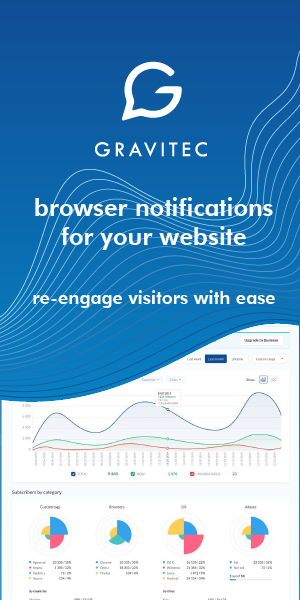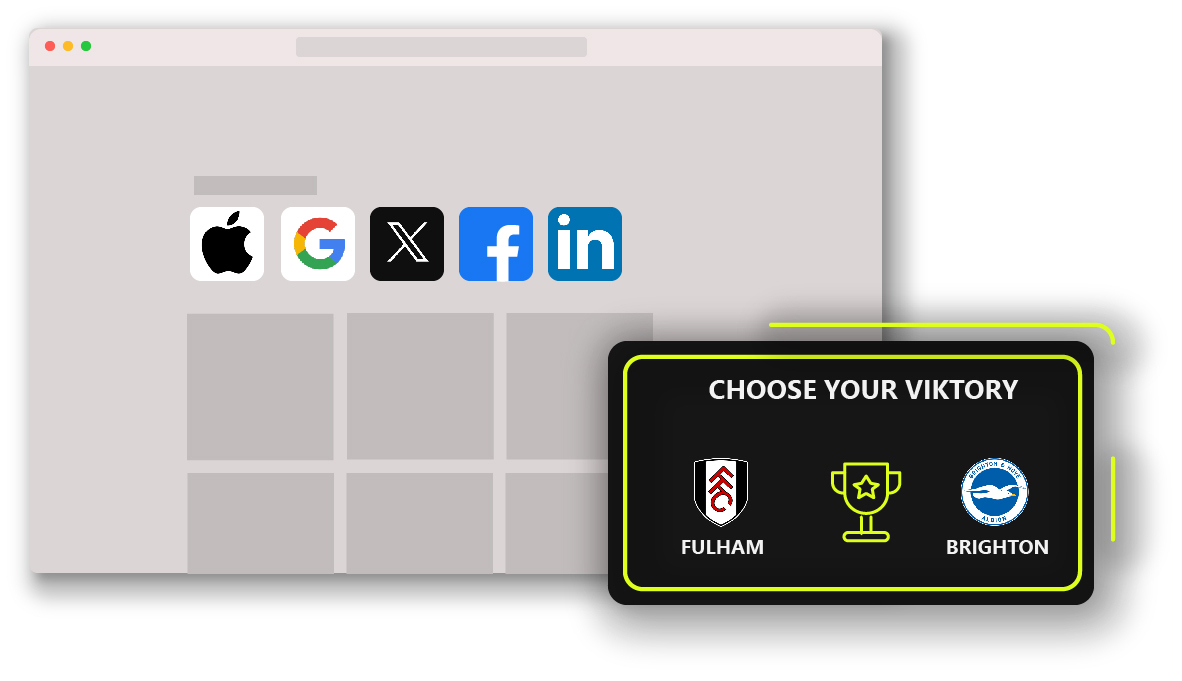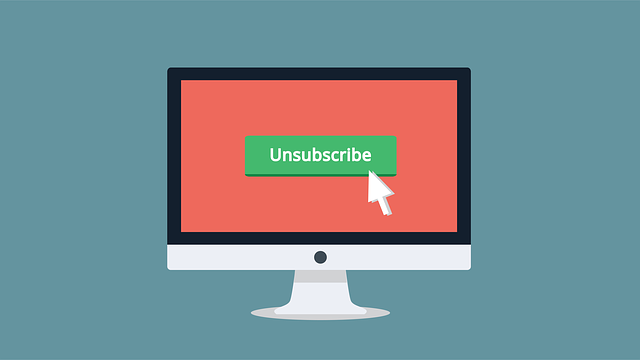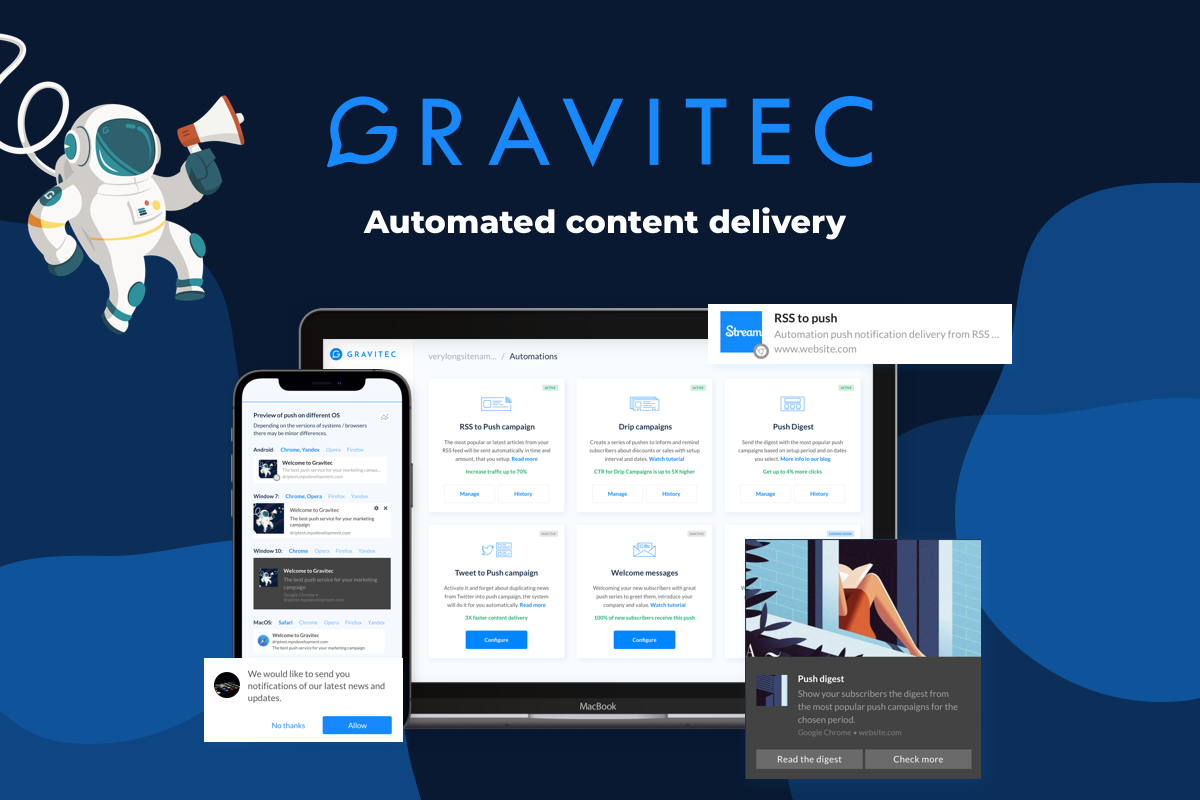Marketing without social media sounds like a ludicrous idea, considering that social media continue to grow — roughly 2.91 billion people use Facebook from 968 million in, say, 2015. However, despite their popularity, social media don’t make it easy for businesses to market their products. The algorithms keep changing, which leads to organic reach decline and ad prices keep growing. If the platform goes down, like Facebook in October 2021, you won’t be able to contact your customers.
Social media is one of the marketing strategies you can use to promote your business. But it’s definitely not the only option. Here’s a list of marketing ideas that don’t rely on social media, so whether you crave sustainability or independence, plan to engage with the older audience or just find social media marketing too draining, you can add some variety to the array of your marketing tactics.
Email marketing
Email marketing can be quite a versatile tool. You can use it to raise brand awareness, inform your subscribers or offer discounts to boost sales. For example, Kate Spade went big and offered a 60% discount to their subscribers. 
By creating FOMO, they urge their subscribers to visit their online store and partake in sales.
You can choose a specialized platform such as Aweber or Brevo for creating and managing your email marketing campaigns. They have templates for creating email sequences for different occasions and business types. You can customize them and use them to your advantage.
To reach even more potential customers you can combine email marketing and push notifications.
How to pair email marketing with push notifications
Push notifications
Push notifications are a great way to reconnect with your website visitors, as they are delivered even when your subscriber isn’t on your website anymore. So, you can remind them to finish reading a blog article they started or notify them about a new blog post that matches their interests.
Push notifications won’t face the danger of getting to a spam folder, and they have quite high click-through rates. According to the DACH 2021 report, a push CTR over 20% is possible.
Instead of sending each notification manually, you can automate push notifications to welcome new subscribers, send notifications to segments or send drip series to offer discounts or educate users about your product.
Start your first push campaign
Best practices on acing your web push notifications:
- Segment your customers.
- Use emojis.
- If you have a local business, use geofencing for notifications to activate whenever a user is near.
- A/B test your notifications.
- Give your subscribers a nudge when they’re inactive.
Blogging
Blogging is a way to establish your expertise on a topic, drive readers to your blog — marketers who use blogging make 67% more leads than marketers who skip this step. Having a blog also makes it 4x times easier to find your site on Google. It’s also a way of creating content that keeps giving. Say, a prospective client has been reading your educational blog for some time. They’ll trust you more when they enter the sales funnel because your content has been useful in the past.
Blogging can be beneficial not only to online businesses, for example, here is a blog run by a hair salon. They share industry news and tips straight from their stylists.
To make the most of your business blog, you can:
- Start with bulk-adding posts in the beginning, as people won’t read a blog that has only one post.
- Post regularly.
- Revive old posts, so that they keep showing up in search results.
- Include internal or external links in your blog posts.
- Do keyword research so that your content matches people’s search requests.
- Make use of CTAs.
- Optimize your blog for mobile devices.
- Reply to comments.
- Encourage email sign-ups.
Check out our article about hobby blogging.
Offline events
Offline events can be a way to stand out when everyone is holding webinars and Instagram live shows. Online events have become a necessity, but they can be quite tiresome, which leads to online event fatigue. There are multiple types of events to host or to visit:
- Niche conferences
- Trade shows
- Networking events
- Award events
- Launch parties
- Festivals
- Demos/consultations
Use events as a chance for networking, speaking opportunities, handing out business cards, or discounts. You can combine offline and online marketing techniques and give out cards with QR codes that lead to more information about your business. Another way to leverage offline events is event sponsorship. It can work both as a promotion and a way to support the community.
Traditional marketing tactics
There are multiple options to promote business without social media, the old-fashioned way. Offline marketing encompasses all promotional tactics that can be done without the internet.
- Hyperlocal advertising

- Tactile marketing campaigns
It still can be about creating a wow effect for your audience when a product becomes your whole marketing campaign strategy. For example, KitKat and Airfix, one of the biggest British scale model kit companies, created a limited collection of Supermarine Spitfires that were sent to YouTubers.
Airfix instructions got a “have a break” step with a KitKat inside.
- Outdoor advertising
Billboards not only give you a chance to raise brand awareness for your business, but they also offer you a chance for creating something viral. For example, this billboard for the BBC TV series used a clever design where several stakes hammered into the billboard created Dracula’s shadow at night.
- Direct mail
One would have expected that in the world of emails direct mail became obsolete. However, 67% of those living in the US believe direct mail is more personal than ads that come via digital channels. - Television or radio commercials
The main benefit of TV or radio commercials is that they will be played multiple times, as their internet versions can be blocked or skipped. It also might be more effective when targeting an older audience — as people over 50 spend twice as much time watching TV as millennials.
One of the prominent video ad examples was a metro safety ad with a catchy Jingle, ‘Dumb Ways to Die’, which even was played as a song on the radio and got turned into a mobile game.
Digital marketing tactics
If you want to know how to advertise without social media, it doesn’t necessarily mean that you should forsake the internet altogether. For starters, you’ll need a website. It will center your marketing efforts and provide information for potential customers about who you are and what problems you solve.
Here are some additional marketing tactics you can use:
- Release white papers. They can become a lead magnet for your audience and educate them about industry and trends.
- Host webinars to provide value to your audience via the live presentation of information.
- Guest blogging can help you establish your authority and lead readers to your website.
- Leverage content syndication where your content is republished on third-party websites. It can increase your reach, create backlinks to your websites and drive traffic back to the original content.
Advocate marketing
Advocate marketing uses the oldest technique in the book, the word of mouth, to promote your business. And it hasn’t lost its effectiveness with time — a study by Ipsos found that people still trust peer customer reviews more than ads from celebrities or brand’s messages.
A study by Nielsen confirms the point, stating that 92% of customers across various industries tend to trust people in their circles rather than brands. It can also be a way of dealing with the information overload, instead of trying to assess the brands individually, people choose to believe other consumers and rely on their experience to see that information is credible.
How do you find customers to become your brand advocates?
- The easiest way is to implement the Net Promoter Score (NPS), which uses repurchases and referrals to calculate customers’ loyalty scores.
- Look through review platforms, like Yelp, to find customers you’d like to reach out to.
- Ask your customer service for eligible candidates.
- Consider asking your employees to become brand advocates, share brand posts, or tell about their life as an employee. It can become beneficial for you when you’re looking for new employees on LinkedIn.
- Create a referral program.
Motivating your customers to become brand advocates can come in various forms, like offering them discounts or VIP perks. Influitive broke down the needs of brand advocates and turned them into an infographic.
The advocate needs can include physical rewards (merch, gift cards, etc.), recognition (personal thank-yous), empowerment (listening to their feedback and opinions), VIP experience (exclusive benefits or memberships), and influence (thought leadership). Note that some marketplaces might have issues with a reviews-for-benefits plan, for example, Amazon forbids offering perks for reviews. Other ways of promoting your business can include direct referral, attending events, or taking part in a case study.
Collaboration with partners
Collaborate with other brands to enter new target markets. The trick to partnership marketing is to choose the brands whose audiences are close enough so that they’ll find you interesting, and yet don’t match the audience you already have. In addition to reaching out to new audiences, co-creating marketing campaigns can be cheaper than doing it on your own. By the way, to find contacts of your potential partners and start collaborating with them, don’t forget about LinkedIn, even though it’s a social medium. Learn how to get LinkedIn leads.
The most mutually beneficial forms of partnership marketing are:
- Affiliate marketing
Affiliate marketing involves collaboration with a publisher, such as an affiliate website, a blogger, or another brand. 74% of US-based consumers check affiliate sites before making a purchase, so it can be an effective way to boost sales. - Product co-branding. Betty Crocker and Hershey’s co-branding campaign resulted in Betty Crocker’s products based on Hershey’s chocolate. The partnership was revealed at the Betty Crocker event, and it got so popular, they launched a food truck tour.

- Distribution partnership
With distribution partnership, your products are included in a bundle with other products. A customer who’s already using a product might be more open to trying out the one that comes with it. - Partnering with charities or NGOs
Marks&Spencer partners with Breast Cancer Now and raises money to fund cancer research through sales. They also feature real women stories to raise awareness.
- Product placement in a movie or a video, or direct advertising on a daytime TV show. Here’s an example of Subway’s product placement in a game promo for Uncharted.

Whether your product placement will be a success depends on the level of popularity of the film. For example, an accidental Starbucks product placement of Game of Thrones allegedly resulted in $2.3 billion in revenue.
- Co-creating content
GoPro and Red Bull created multiple campaigns during their partnership. GoPro equipped athletes to document their adventures, while Red Bull sponsored events.
In addition to videos, the types of content you can partner on can include:
- Articles
- Blogs
- Whitepapers
- Infographics
- Podcasts
Podcasts
As of 2020, 55% of people in the US listen to podcasts. The podcasts are supported with ads and sponsorships, so you can place your ad to reach a new audience within your industry. Podcasts are easy to consume, so you might reach your audience when they’re not researching products actively and increase brand awareness for your business.
For example, Shopify uses podcasts to reach new entrepreneurs who will use Shopify for their eCommerce needs.  Here are some best practices to leverage podcasts as a part of your marketing strategy:
Here are some best practices to leverage podcasts as a part of your marketing strategy:
- Go speak about hot trends to establish your position as an expert.
- Turn podcast episodes into blog posts.
- If you start your own podcasts, interview experts in your niche. This way, some of them would share your content, so you’ll get backlinks and reach a new audience.
- Provide show notes with links and more resources. You can also include an opt-in form on the page with notes.
Collaboration with media
Choose online or offline media to get featured either with native advertisements, white-label content, or ads. Media platforms like BuzzFeed are full of native and paid content that is used to endorse certain products or brands. 
Forbes also supports not only ads but also native advertising via guest posts. 
Seeing an ad in print will engage your potential customers for longer periods of time, simply because people are more likely to look at them longer than while consuming digital media. You can also use it to create a tactile experience.
For example, Ikea went one step further and created an ad for a crib that can also be used as a pregnancy test.
Absolut has been using print ads since 1980 and printed over 1500 ad versions.
PR
There are multiple ways to leverage public relations to promote your business.
Here are some ideas to choose from.
- Distribute press releases with interesting angles to news media that are likely to cover news in your niche.
- Speak at events your target audience is likely to visit.
- Sponsor events, sports teams, or local initiatives to get noticed by local communities.
- Give interviews to radio hosts or print journalists.
- Attend industry conferences to meet potential customers and partners.
- Open your doors to give live training or product demonstrations.
Summary
Social media marketing is only one of the marketing strategies, so there are plenty of other tactics to use. You can go for digital or traditional marketing techniques. Let’s recap the strategies that can help you promote your business on your conditions without depending on social media platforms:
- Email marketing.
- Blogging.
- Push notifications.
- Offline events.
- Commercials.
- Billboards.
- Content marketing.
- Advocate marketing.
- Collaboration.
- Podcasts.
- Media.
- Print ads.
- PR strategies.
Can I effectively market my business without using social media?
Absolutely! You can use strategies like email marketing, blogging, push notifications, PR, offline events, and traditional ads. These methods allow you to engage your audience, build trust, and promote your brand without relying on social platforms.
What are some offline marketing techniques I can use?
Offline strategies include hosting events, sponsoring local initiatives, leveraging billboards or direct mail, and using TV or radio commercials. These methods are great for reaching audiences who may not be active on social media.
How can I engage my audience without social media?
Engage your audience through blogging, email newsletters, push notifications, podcasts, or collaborations with other brands. Focus on creating valuable content, hosting webinars, or using advocate marketing to build trust and connections with your audience.















